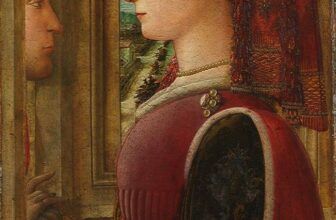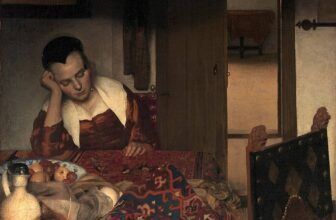
Why was Philip of Habsburg called Philip the Handsome
Philip the Handsome: A Star That Burned Bright and Brief
In the grand theater of European history, some figures shine not only for their power or conquests, but for their charisma and sheer presence. One such figure was Philip the Handsome, a prince whose beauty, charm, and royal bloodline shaped the destiny of empires. Known also as Philip the Fair, he was the first Habsburg king of Castile and a key figure in the rise of the mighty Habsburg dynasty that would go on to rule vast parts of Europe for centuries.
But who was this man, reputed as one of the most handsome kings the world had ever known? Why was he called “the Handsome”? And what role did he truly play in the tapestry of European power and politics?
Let us walk through the life of Philip of Habsburg, not just as a historical monarch, but as a man whose looks, love, and legacy left an indelible mark on the continent.
The Birth of a Prince: Origins of a Dynastic Legend
Born on July 22, 1478, in Bruges, a prominent city in the Duchy of Burgundy (modern-day Belgium), Philip was the son of the Holy Roman Emperor Maximilian I and Mary of Burgundy, one of the richest and most powerful heiresses in Europe at the time.
His birth united two of the most significant dynasties of medieval Europe: the Habsburgs, a powerful noble family from Austria, and the Valois-Burgundy, a wealthy and influential offshoot of the French royal line.
From the moment of his birth, Philip was a political treasure. He was heir to Burgundy through his mother, and to the Habsburg lands through his father. When Mary died in a riding accident in 1482, young Philip inherited the title of Duke of Burgundy at the tender age of four.
Though a child, his rule was no minor affair. Burgundy was not just a duchy; it included prosperous regions such as Flanders, Brabant, and Holland, territories that were among the wealthiest in Europe due to trade, textiles, and commerce.
A Face That Launched a Thousand Alliances: Why Was He Called “the Handsome”?
Philip’s nickname, “the Handsome” (or “le Beau” in French and “el Hermoso” in Spanish), was not a simple courtly flattery. Contemporaries across Europe commented on his extraordinary good looks. Descriptions of him painted a vivid picture:
Tall and athletically built.
Flowing golden or light brown hair.
Deep-set blue eyes with a commanding, almost melancholic gaze.
A square jaw and noble bearing that seemed almost sculpted.
In an age when physical appearance could heavily influence perceptions of leadership and legitimacy, Philip’s beauty became an asset, not only in courtly circles but also in diplomatic negotiations.
Even hardened diplomats and skeptical nobles reportedly softened when in his presence. He was not just a pretty face; he had an undeniable charm that made him magnetic, especially to the powerful women and royal houses of Europe. In an era where arranged marriages were driven by cold politics, Philip’s beauty brought warmth, and leverage.
So, to answer plainly: Philip of Habsburg was called “the Handsome” because he truly stood out for his looks, even among the finely bred royalty of Europe. It wasn’t just a poetic title; it was a reputation supported by nearly every chronicler of his day.
The Marriage That Changed Europe: Philip and Joanna of Castile
In 1496, Philip entered into one of the most politically consequential marriages of the era. He wed Joanna of Castile, the second daughter of Isabella I of Castile and Ferdinand II of Aragon, the powerful Catholic Monarchs of Spain.
The union was intended as a diplomatic bridge between the Habsburg and Spanish kingdoms, as part of a wider strategy to counterbalance French power. But what began as a political move soon developed into a passionate, even turbulent love story.
Joanna, later known as “Juana la Loca” (Joanna the Mad), fell deeply, obsessively in love with her dashing husband. Philip, initially indifferent, grew to enjoy her affection, until his courtly lifestyle and taste for mistresses began to create rifts.
Joanna’s mental health began to deteriorate, worsened by her jealousy and Philip’s increasing political ambition. Their relationship was marked by love, betrayal, passion, and tragedy, a blend that would later inspire historians and dramatists alike.
Despite their personal conflicts, the marriage produced several children, including Charles V, who would become Holy Roman Emperor and King of Spain, uniting more territory under one crown than any ruler before him.
Thus, Philip’s marriage wasn’t just personally significant; it was historically monumental. It created a bloodline that would rule over an empire so vast it was said “the sun never set” on it.
The Accidental King: Philip’s Short Rule Over Spain
In 1504, Joanna’s mother, Queen Isabella of Castile, died. According to Spanish law, Joanna was the rightful heir to the throne of Castile. That made Philip the consort king, but he had grander ideas. Philip saw an opportunity not just to rule alongside Joanna, but to rule in his own right.
He declared himself Philip I of Castile, claiming the throne through his wife’s inheritance, and entered Spain with an army and a lavish court. His goal was to assert dominance and push aside his father-in-law, Ferdinand II, who also had designs on Spanish control.
Tensions rose between Philip and Ferdinand, who feared Habsburg influence over Spain. The Spanish nobles were divided. Some supported Philip for his fresh European charisma; others mistrusted the foreigner.
But fate would soon intervene.
Just months after being recognized as King of Castile, Philip suddenly fell ill in September 1506. Accounts vary, some say it was typhoid, others suspect poisoning. In any case, the 28-year-old monarch died in Burgos, shocking Europe.
His death was not just a personal tragedy, it threw Spain into political chaos and plunged Joanna deeper into mental instability. She would be confined for the rest of her life in the royal palace of Tordesillas, while their son, Charles, would inherit both the Habsburg and Spanish thrones.
Philip’s reign over Spain had lasted just a few short months. But those months, and his marriage, had forever changed the course of European history.
The Rise of the Habsburg Empire: Philip’s Enduring Legacy
Though his life was cut short, Philip the Handsome’s legacy was nothing less than imperial. Through his son Charles, Philip became the progenitor of one of the most powerful dynasties in history. Charles would go on to rule:
Spain (as Charles I),
The Holy Roman Empire (as Charles V),
The Netherlands,
Parts of Italy, Germany, Austria, and
Colonies in the Americas and Asia.
This vast domain created the first global empire in history. It was Philip’s marriage to Joanna that had made it possible.
As Charles matured, he saw himself not just as a king, but as a divine ruler with a mission to protect Christendom. The roots of that vision were planted by Philip, a man who never ruled an empire himself but created the bloodline that would.
In this sense, Philip the Handsome was the beautiful spark that ignited an imperial flame.
Philip the Handsome vs. Philip the Fair: One and the Same?
Here’s a common source of confusion: Was Philip the Handsome the same as Philip the Fair?
Yes, and no.
The confusion arises because two separate kings in European history were given the nickname “the Fair” (which can also be translated as “handsome”).
Philip IV of France (1268–1314), known as Philip the Fair, was a French king known for his stern rule and good looks. He lived more than a century before Philip of Habsburg.
Philip of Habsburg (1478–1506), is often called “Philip the Handsome” in English, “Felipe el Hermoso” in Spanish, and “Philippe le Beau” in French. The word “beau” in French can mean both “fair” and “handsome,” depending on the context.
So, although they share similar nicknames, they are different historical figures.
To be precise:
Philip IV of France = Philip the Fair
Philip of Habsburg = Philip the Handsome
The Habsburg Philip was not only fair in looks, but also fair-haired, leading some chroniclers to double down on the poetic imagery. He was, quite literally, “golden.”
Was He the Most Handsome King in the World?
It’s impossible to measure beauty across the ages, but among royal figures in history, Philip the Handsome is often cited as one of the most attractive monarchs of all time.
Few kings inspired so many admiring contemporary accounts. He was the prototype of the “ideal prince” in Renaissance Europe, graceful, masculine, elegant, powerful, and mysterious.
Moreover, his beauty wasn’t just physical; it was enhanced by his confidence, elegance, and regal bearing. In a world where portraits were often exaggerated to flatter royal patrons, Philip’s likenesses remain surprisingly consistent, striking, serene, and noble.
In courtly romance, political dealings, and dynastic marriages, Philip’s looks and aura became a diplomatic tool, just as potent as armies or treaties.
Philip the Handsome lived only 28 years, yet his life reverberated through centuries of European history. He was a prince of Burgundy, a consort king of Spain, a son of emperors, and the father of emperors.
His striking appearance made him legendary, but it was his strategic marriage and dynastic position that changed the world. The seeds he planted, particularly through his son Charles V, grew into an empire so vast it spanned continents.
History may remember him as the beautiful prince who died too young, but his legacy is far more than skin deep. He was the charming architect of a political union that shaped the modern world.
In the end, Philip the Handsome was not just a man admired for his face, but a royal visionary whose life brought together the great houses of Europe and whose bloodline ruled empires for generations.




